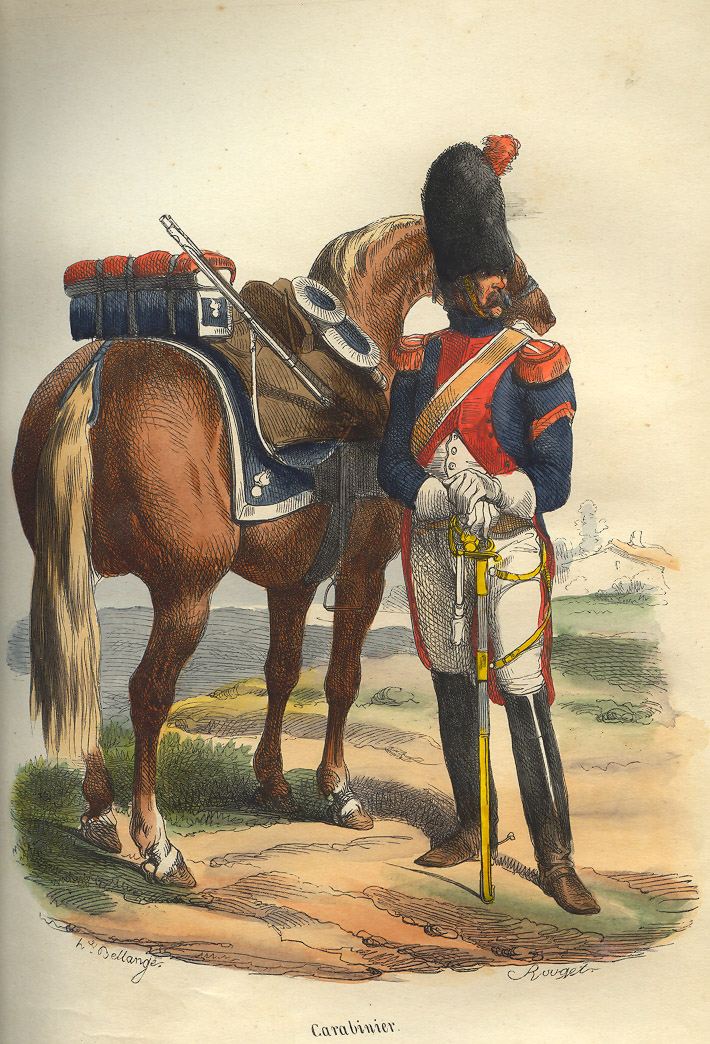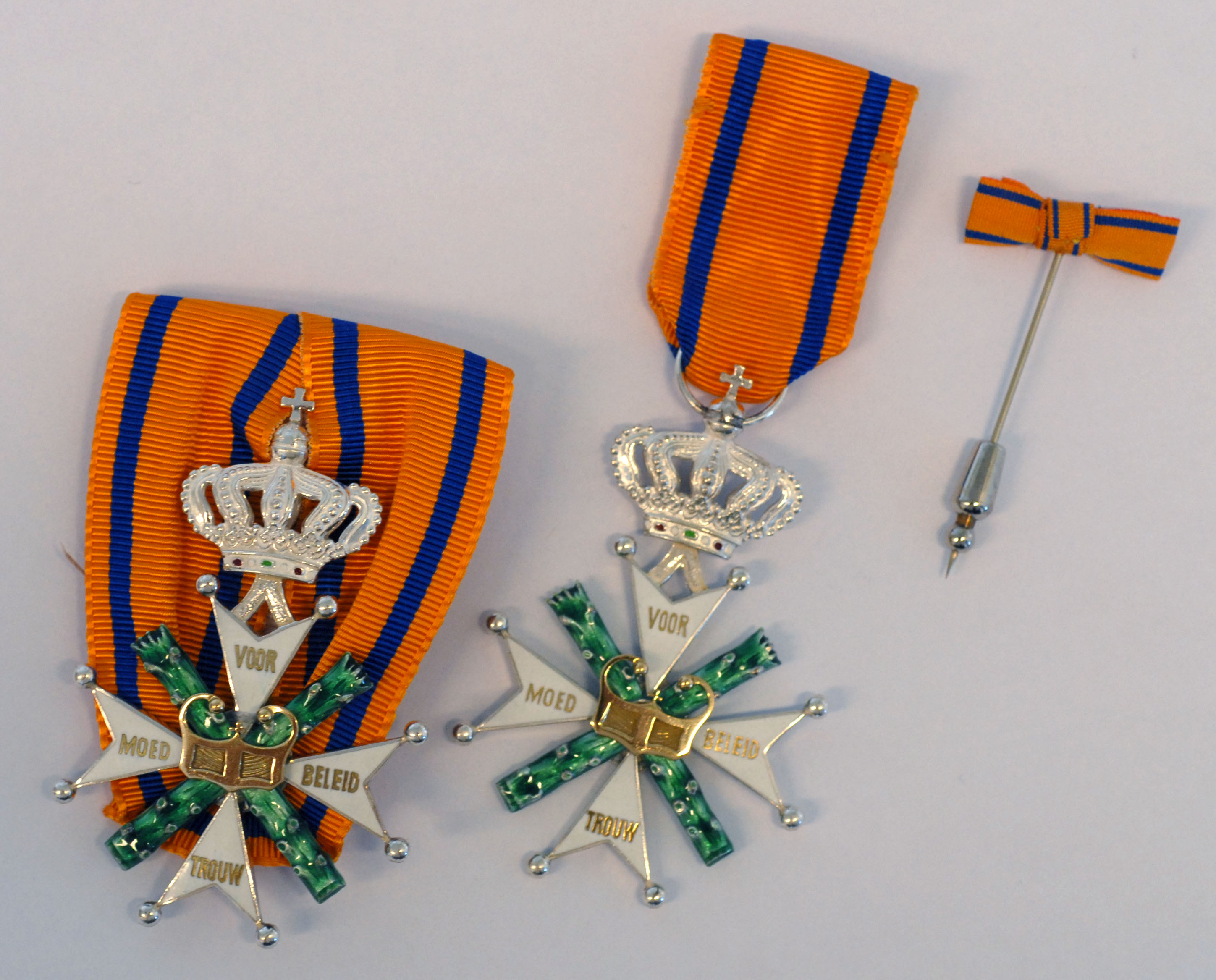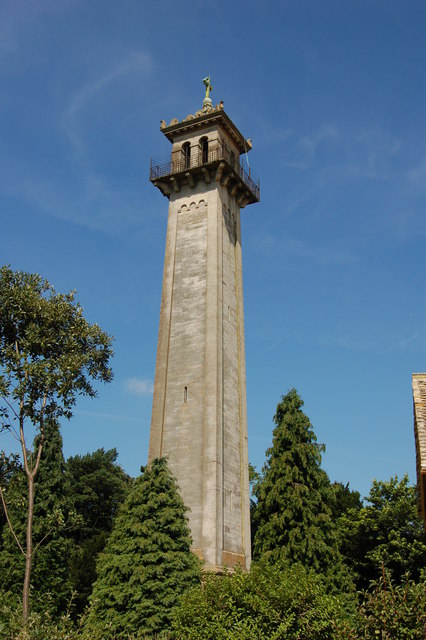|
Albert Dominicus Trip Van Zoudtlandt
Jonkheer Albert Dominicus Trip van Zoudtlandt (Groningen (city), Groningen, 13 October 1776—The Hague, 23 March 1835) was a Dutch lieutenant-general of cavalry who headed the Dutch heavy cavalry brigade at the Battle of Waterloo. Biography Family life Trip was the son of Jonkheer Jan Louis Trip van Zoudtlandt and Anna Wilhelmina, countess of Limburg-Stirum. He first married Cornelia Gijsberta Smit, and after her death, Elisabeth Gratiana, countess of Limburg-Stirum (a cousin) at The Hague on 16 August 1826. Career Trip entered the service of the Dutch Republic on 1 July 1791 as a cadet in an infantry regiment. He was commissioned as a second lieutenant in 1792, and promoted to first lieutenant on 8 July 1795. By then the Batavian Republic had replaced the Dutch Republic. As an officer in the Batavian army, and subsequently the army of the Kingdom of Holland he saw action in its campaigns as an ally of the imperial French army in Germany and (then Swedish) Pomerania. During t ... [...More Info...] [...Related Items...] OR: [Wikipedia] [Google] [Baidu] |
Trip Van Zoudtlandt
Trip may refer to: Arts and entertainment Fictional characters * Trip (Pokémon), Trip (''Pokémon''), a ''Pokémon'' character * Trip (Power Rangers), in the American television series ''Time Force Power Rangers'' * Trip, in the 2013 film ''Metallica Through the Never'' * Trip Fontaine, in the novel ''The Virgin Suicides'' * Trip Tucker, in the television series ''Star Trek: Enterprise'' Film and television Films * The Trip (1967 film), ''The Trip'' (1967 film), an American film directed by Roger Corman * The Trip (2002 film), ''The Trip'' (2002 film), an American gay romance film * ''A Trip'', a 2011 Slovenian film * Trip (film), ''Trip'' (film), a 2021 Indian Tamil-language film * The Trip (2021 film), ''The Trip'' (2021 film), a Norwegian action-comedy film Television =Series= * The Trip (1999 TV series), ''The Trip'' (1999 TV series), a British documentary series * The Trip (2010 TV series), ''The Trip'' (2010 TV series), a British sitcom * ''Trip'', an upcoming List of Quib ... [...More Info...] [...Related Items...] OR: [Wikipedia] [Google] [Baidu] |
Carabiniers
A carabinier (also sometimes spelled carabineer or carbineer) is in principle a soldier armed with a carbine. A carbiniere is a carabiniere musket or rifle and were commonplace by the beginning of the Napoleonic Wars in Europe. The word is derived from the identical French word ''carabinier''. Historically, carabiniers were generally (but not always) horse soldiers. The carbine was considered a more appropriate firearm for a horseman than a full-length musket, since it was lighter and easier to handle while on horseback. Light infantry sometimes carried carbines because they are less encumbering when moving rapidly, especially through vegetation, but in most armies the tendency was to equip light infantry with longer-range weapons such as rifles rather than shorter-range weapons such as carbines. In Italy and Spain, carbines were considered suitable equipment for soldiers with policing roles, so the term ''carabinier'' evolved to sometimes denote gendarmes and border guar ... [...More Info...] [...Related Items...] OR: [Wikipedia] [Google] [Baidu] |
Willem Jan Knoop
Willem Jan Knoop (2 May 1811 in Deventer – 24 January 1894 in The Hague) was a Dutch lieutenant-general, military historian, and politician. As a young captain of the Dutch General Staff he wrote a rebuttal of the British military historian William Siborne's account of the Battle of Quatre Bras and the Battle of Waterloo, published as ''History of the War in France and Flanders in 1815'' in 1844, in which Siborne portrayed the conduct of the Dutch army at these battles as poor. Siborne's book had caused a furore in the Netherlands as Siborne was seen as insulting "the honor of the Dutch army", and of King William II of the Netherlands, who as Prince of Orange had commanded that army at both battles, and was revered as a national hero by the Dutch. Biography Knoop, a lifelong bachelor, was the son of Colonel Willem Hendrik Knoop and Henrica Willemina Hartkamp. He spent his early years in Bruges (his father was military governor there) where he frequented the library of the '' ... [...More Info...] [...Related Items...] OR: [Wikipedia] [Google] [Baidu] |
Henry Paget, 1st Marquess Of Anglesey
Henry William Paget, 1st Marquess of Anglesey (17 May 1768 – 29 April 1854), styled Lord Paget between 1784 and 1812 and known as the Earl of Uxbridge between 1812 and 1815, was a British Army officer and politician. After serving as a member of parliament for Carnarvon and then for Milborne Port, he took part in the Flanders Campaign and then commanded the cavalry for Sir John Moore's army in Spain during the Peninsular War; his cavalry showed distinct superiority over their French counterparts at the Battle of Sahagún and at the Battle of Benavente, where he defeated the elite chasseurs of the French Imperial Guard. During the Hundred Days he led the charge of the heavy cavalry against Comte d'Erlon's column at the Battle of Waterloo. At the end of the battle, he lost part of one leg to a cannonball. In later life he served twice as Master-General of the Ordnance and twice as Lord Lieutenant of Ireland. Background, education and politics He was born Henry Bayley, the ... [...More Info...] [...Related Items...] OR: [Wikipedia] [Google] [Baidu] |
William Siborne
William Siborne, Sibourne or Siborn (15 October 1797 – 9 January 1849) was a British officer and military historian whose most notable work was a history of the Waterloo Campaign. Early life William Siborne was the son of Benjamin Siborne, a captain in the 9th (East Norfolk) regiment, born in Greenwich circa 1771. His father had been wounded at the Battle of Nivelle in the Peninsular War. William Siborne graduated from the Royal Military College, Sandhurst in 1814, having been commissioned as an ensign in the same regiment (renamed the 9th Regiment of Foot in 1782) on 9 September 1813, before it joined the 2nd battalion at Canterbury, then Chatham, and finally Sheerness in 1815. Military career In August 1815, he was sent to France to join the Duke of Wellington's army of occupation, doing duty in the Camp of Boulogne, near Paris. He obtained the rank of lieutenant in November 1815, but was put on half pay from March 1817, when his regiment was reduced to one battalion. In S ... [...More Info...] [...Related Items...] OR: [Wikipedia] [Google] [Baidu] |
Military William Order
The Military William Order, or often named Military Order of William (Dutch: , abbreviation: MWO), is the oldest and highest honour of the Kingdom of the Netherlands. It is named after St. William of Gellone (755–814), the first Prince of Orange. Its motto is (For Bravery, Leadership and Loyalty). The chivalric order was established on 30 April 1815 by King William I and was presented for feats of excellent bravery on the battlefield and as a meritorious decoration to senior military officers. Comparable with the French Légion d’Honneur but far less often awarded, it is open to everyone regardless of rank or nobility—not only to Dutch military, but also to foreigners. To date, membership in the Order is extremely rarely awarded, and only for exceptional bravery in battle. In the spring of 1940 it was decided that civilians would receive the Order for heroic acts in the resistance. After the liberation of the Netherlands and the Dutch East Indies, several men and one woma ... [...More Info...] [...Related Items...] OR: [Wikipedia] [Google] [Baidu] |
François De Bas
François de Bas (10 September 1840 – 22 February 1931) was a Dutch general and military historian. He almost single-handedly founded the military-history section of the Dutch General Staff. He co-authored major historical works on the Dutch States Army and the Campaign of 1815, which climaxed with the Battle of Waterloo. The latter work is still the authoritative source on the Dutch-Belgian role in that battle, because it contains copies of after-battle reports of Dutch officers who participated in the battle, the originals of which were lost in a Royal Air Force bombardment of the Dutch Army archives in 1945. Life De Bas was born in The Hague, the son of Willem Jacobus de Bas, Heer of Barwoutswaarder en Bekenes, and Johanna Maria Köhler. He married Maria Cornelia Wilhelmina Vinkhuyzen on 26 August 1863. They had five surviving children. Career After boarding school (the academy of Guillaume Alexander Burnier in The Hague), De Bas entered the Royal Dutch Military Acade ... [...More Info...] [...Related Items...] OR: [Wikipedia] [Google] [Baidu] |
Order Of Battle Of The Waterloo Campaign
This is the complete order of battle for the four major battles of the Waterloo campaign. French Army order of battle Headquarters L'Armée du Nord under the command of Emperor Napoleon I. ''Major Général'' (Chief of Staff): Marshal Soult, Duke of Dalmatia. Commander of artillery: General of Division Charles-Étienne-François Ruty. Field commanders under the direct command of Emperor Napoleon: * Marshal Ney, Prince of the Moskova: ** On 16 June 1815, at the battle of Quatre Bras, in command of the Left Wing: I Corps, II Corps (minus the Girard division, present at the battle of Ligny), III Cavalry Corps (minus the l'Héritier division, present at the battle of Ligny) and Imperial Guard light cavalry division. ** On 18 June 1815, at the battle of Waterloo, effective field commander of all the French forces present, minus those engaged at Plancenoit (VI Corps and elements of the Guard). * Marshal Marquis de Grouchy: ** On 16 June 1815, at the Battle of Ligny, in comm ... [...More Info...] [...Related Items...] OR: [Wikipedia] [Google] [Baidu] |
Lord Edward Somerset
General Lord Robert Edward Henry Somerset (19 December 17761 September 1842) was a British soldier who fought during the Peninsular War and the War of the Seventh Coalition. Life Somerset was the third son of Henry Somerset, 5th Duke of Beaufort, and elder brother of Lord Raglan. Joining the 15th Light Dragoons in 1793, he became captain in the following year, and received a majority after serving as '' aide-de-camp'' to Prince Frederick, Duke of York in the Dutch expedition of 1799. At the end of 1800 he became a lieutenant-colonel, and in 1801 received the command of the 4th Dragoons. From 1799 to 1802 he represented the Borough of Monmouth in the House of Commons, from 1803 to 1823 and from 1830 sat for Gloucestershire and from 1834 to 1837 was MP for Cirencester. He commanded his regiment at the battles of Talavera and Buçaco, and in 1810 received a colonelcy and the appointment of ''aide-de-camp'' to the king. In 1811, along with the 3rd Dragoon Guards, the 4th Dr ... [...More Info...] [...Related Items...] OR: [Wikipedia] [Google] [Baidu] |
Jean-Baptiste Drouet, Comte D'Erlon
Jean-Baptiste Drouet, Comte d'Erlon (29 July 176525 January 1844) was a Marshal of France and a soldier in the Grande Armée during the Napoleonic Wars. He notably commanded the I Corps of the '' Army of the North'' at the Battle of Waterloo. Early life D'Erlon was born in Reims on 29 July 1765. His father and grandfather were carpenters, and he trained to be a locksmith. Revolutionary Wars D'Erlon entered the army as a private soldier in 1782, was discharged after five years’ service and re-entered it in 1792. In 1792 he served as a corporal in the pre-revolutionary army, being elected to captain the following year. From 1794 to 1796 he was aide-de-camp to General Lefebvre. In 1799 he was promoted to brigadier general, and fought under André Masséna in Switzerland. The same year he distinguished himself at the Second Battle of Zurich. He continued his service in many battles of the French Revolutionary and Napoleonic Wars, including the Battle of Hohenlinden (3rd Dec ... [...More Info...] [...Related Items...] OR: [Wikipedia] [Google] [Baidu] |
Michel Ney
Michel Ney, 1st Duke of Elchingen, 1st Prince of the Moskva (; 10 January 1769 – 7 December 1815), was a French military commander and Marshal of the Empire who fought in the French Revolutionary Wars and the Napoleonic Wars. He was one of the original 18 Marshals of the Empire created by Napoleon I. He was known as Le Rougeaud by his men; Napoleon characterized him as "le Brave des braves (the Bravest of the Brave), a real paladin in the field, a braggart without judgment and decision in the workroom and after all is said, a Don Quixote." Early life Ney was born in the town of Sarrelouis, in the French province of the Three Bishoprics, along the French–German border. He was the second son of Pierre Ney (1738–1826), a master cooper and veteran of the Seven Years' War, and his wife Marguerite Greiveldinger. He was the paternal grandson of Matthias Ney (1700–1780) and wife Margarethe Becker (d. 1767), and the maternal grandson of Valentin and wife Margaretha Ding ... [...More Info...] [...Related Items...] OR: [Wikipedia] [Google] [Baidu] |
Arthur Wellesley, 1st Duke Of Wellington
Arthur Wellesley, 1st Duke of Wellington, (1 May 1769 – 14 September 1852) was an Anglo-Irish people, Anglo-Irish soldier and Tories (British political party), Tory statesman who was one of the leading military and political figures of United Kingdom of Great Britain and Ireland, 19th-century Britain, serving twice as prime minister of the United Kingdom. He is among the commanders who won and ended the Napoleonic Wars when the coalition defeated Napoleon at the Battle of Waterloo in 1815. Wellesley was born in Dublin into the Protestant Ascendancy in Kingdom of Ireland, Ireland. He was commissioned as an Ensign (rank), ensign in the British Army in 1787, serving in Ireland as aide-de-camp to two successive lords lieutenant of Ireland. He was also elected as a Member of Parliament (United Kingdom), member of Parliament in the Irish House of Commons. He was a colonel by 1796 and saw Flanders Campaign, action in the Netherlands and in India, where he fought in the Fourth Angl ... [...More Info...] [...Related Items...] OR: [Wikipedia] [Google] [Baidu] |








